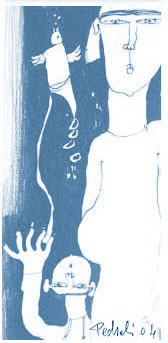Viability and DNA fragmentation in differently sorted boar spermatozoa.
| Viability and DNA fragmentation in differently sorted boar spermatozoa. De Ambrogi M, Spinaci M, Galeati G, Tamanini C. Theriogenology, 66(8): 1994-2000, 2006. |
|
Sperm cell defense against DNA damage relies on two factors: the tight packaging of chromatin, based on condensation and substitution of histones with protamines, and the antioxidant agents present in seminal plasma. These defenses are extremely important as mature sperm is unable to repair DNA damage and even if a successful fertilization occurs, embryo undergoes apoptosis at the time of genomic activation. Sex-sorting exposes spermatozoa to stress sources such as high pressure, laser beam and electrical charge. The aim of this work was to determine how sorting procedures affect viability and DNA integrity in boar spermatozoa, by using the newly developed Sperm-Sus-Halomax((R)). Four sperm populations were considered: CONTROL (no treatment), REAL (sex-sorted semen), BULK (semen sorted without sex separation) and NO LASER (semen only exposed to the high pressure, but including also cells normally discarded from sex-sorting). A significantly (P=0.019) lower viability in NO LASER (64.71%) than in CONTROL (78.6%) and REAL (80.5%) groups was found; this was accompanied by a significantly (P=0.001) higher DNA fragmentation index (DFI) in NO LASER group (6.86%) respect to CONTROL (3.30%) and REAL (3.42%) groups. BULK group did not show any difference in viability or DFI as compared to the other groups. In conclusion, we may believe that sex-sorting procedure as a whole does not affect either viability or DFI and that shear mechanical forces are a relevant source of DNA damage for sorted semen. |
|

